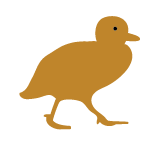This course examines a range of literary works from 1910-1940, a period sometimes known as 'High Modernism' and exemplified by Ezra Pound’s slogan ‘Make It New’. The course explores how writers responded to the tumultuous changes of the early twentieth century by engaging in a radical dismantling of the literary forms and conventions of the previous century, finding, in Virginia Woolf’s words, that ‘the tools of one generation are useless to the next’. A particular focus is on how modernist novelists experimented with techniques for the representation of mental life, such as free indirect discourse, interior monologue and stream-of-consciousness. The course examines key modernist texts by British, Irish and American writers, but also texts from outside the Anglo-American ‘centre’, European texts in translation, and texts not traditionally considered ‘modernist’. The aim will be to gain a sense of the breadth and diversity of modernist creative expression in its response to the tumultuous changes of the period: the impact and aftereffects of the Great War of 1914-1918; the acceleration and mechanization of everyday life; the growing influence of mass media, fashion and consumer culture; the rise of fascism and totalitarianism in the 1920s and 1930s; and far-reaching changes in attitudes towards gender and sexuality, and the politics of race and class.
Learning Outcomes
Upon successful completion, students will have the knowledge and skills to:
- apply knowledge of the historical and cultural context to major authors, works and genres of the early twentieth century;
- reflect and write analytically about modernist literary works and their experiments with language and literary form; and
- develop their own skills of literary critical analysis.
Indicative Assessment
- Weekly reading journal (10) [LO 1,2,3]
- Weekly tutorial participation (10) [LO 1,2,3]
- Short essay (1500 words) (30) [LO 1,2,3]
- Long essay (2500 words) (50) [LO 1,2,3]
The ANU uses Turnitin to enhance student citation and referencing techniques, and to assess assignment submissions as a component of the University's approach to managing Academic Integrity. While the use of Turnitin is not mandatory, the ANU highly recommends Turnitin is used by both teaching staff and students. For additional information regarding Turnitin please visit the ANU Online website.
Workload
130 hours of total student learning time made up from:
a) 36 hours of contact: 24 hours of lectures and 12 hours of tutorials.
b) 94 hours of independent student research, reading and writing.
Requisite and Incompatibility
Prescribed Texts
Virginia Woolf, To the Lighthouse (Oxford World’s Classics)
Nella Larsen, Passing (Penguin)
Preliminary Reading
To be advised on Canvas
Assumed Knowledge
Assumed knowledge: 12 units of ENGL.
It is recommended students have completed ENGL1100 and ENGL1200.
Fees
Tuition fees are for the academic year indicated at the top of the page.
Commonwealth Support (CSP) Students
If you have been offered a Commonwealth supported place, your fees are set by the Australian Government for each course. At ANU 1 EFTSL is 48 units (normally 8 x 6-unit courses). More information about your student contribution amount for each course at Fees.
- Student Contribution Band:
- 1
- Unit value:
- 6 units
If you are a domestic graduate coursework student with a Domestic Tuition Fee (DTF) place or international student you will be required to pay course tuition fees (see below). Course tuition fees are indexed annually. Further information for domestic and international students about tuition and other fees can be found at Fees.
Where there is a unit range displayed for this course, not all unit options below may be available.
| Units | EFTSL |
|---|---|
| 6.00 | 0.12500 |
Course fees
- Domestic fee paying students
| Year | Fee |
|---|---|
| 2026 | $4500 |
- International fee paying students
| Year | Fee |
|---|---|
| 2026 | $5820 |
Offerings, Dates and Class Summary Links
ANU utilises MyTimetable to enable students to view the timetable for their enrolled courses, browse, then self-allocate to small teaching activities / tutorials so they can better plan their time. Find out more on the Timetable webpage.


